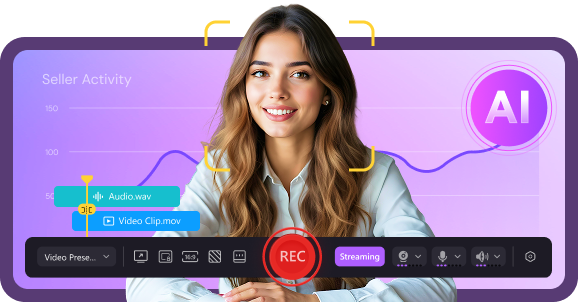When working with digital images, choosing the right format can impact quality, file size, and usability. JPEG and PNG are two of the most commonly used image formats, but they serve different purposes. JPEG is best for photographs and web images due to its compressed size, while PNG retains more details and supports transparency, making it ideal for graphics and design elements.
In this article
In this guide, we’ll explore the differences between JPEG and PNG, when to use each format, and how Wondershare DemoCreator can help you edit and save images in both formats for the best results.
Part 1: What is JPEG?
JPEG (Joint Photographic Experts Group) is a compressed image format commonly used for digital photos, web images, and social media posts. It utilizes lossy compression, meaning some image details are removed to reduce file size and improve loading speed.
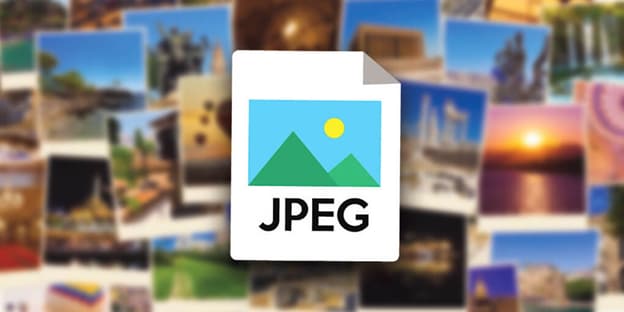
Key Features of JPEG
- Lossy compression reduces file size while sacrificing some image quality.
- Ideal for photographs, web images, and social media posts.
- Does not support transparency, meaning you cannot create images with transparent backgrounds.
- Compresses color-rich images effectively while maintaining an acceptable level of detail.
Best Use Cases for JPEG
- Websites and social media – Faster loading times due to smaller file sizes.
- Photography and digital images – Great for storing and sharing photos without using excessive storage space.
- Email attachments and online sharing – Keeps file sizes manageable for easy uploads and downloads.
Part 2: What is PNG?
PNG (Portable Network Graphics) is a lossless image format that retains all the original image details. It is widely used for logos, digital graphics, and transparent images because it supports alpha channel transparency and maintains high quality after multiple edits.
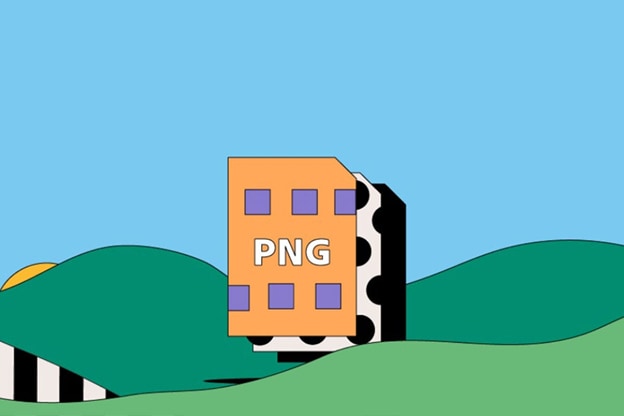
Key Features of PNG
- Lossless compression, preserving original image quality.
- Supports transparency, allowing images to have a see-through background.
- Generally larger file size compared to JPEG, which can impact storage and loading speeds.
- Suitable for detailed graphics, logos, and text-based images where clarity is essential.
Best Use Cases for PNG
- Logos and branding – Transparency support makes PNG ideal for placing logos on various backgrounds.
- High-quality images for editing and archiving – Maintains image integrity even after multiple edits.
- Screenshots, charts, and infographics – Ensures clarity and sharpness for text and graphical elements.
Part 3: JPEG vs. PNG – Key Differences
When comparing JPEG and PNG, it's important to understand their fundamental differences in compression, quality, transparency support, and best use cases. Below are the key differences between the two formats:

1. Compression Method
JPEG uses lossy compression, which reduces file size by permanently removing some image data. This helps minimize storage usage and speeds up web performance, but it may cause slight quality loss, especially after multiple edits. In contrast, PNG uses lossless compression, ensuring that the image retains its full detail and clarity even after editing and saving multiple times.
2. File Size
Due to lossy compression, JPEG files are much smaller than PNG files, making them more suitable for websites, social media, and email attachments. PNG files are larger because they preserve all image details, which makes them a better option for high-quality visuals and images that require transparency.
3. Transparency Support
JPEG does not support transparency, meaning any background in the image will be filled with a solid color. PNG, on the other hand, supports transparency through its alpha channel, making it ideal for logos, digital designs, and UI elements where a clear or semi-transparent background is needed.
4. Image Quality and Editing
PNG maintains full image quality even after multiple edits, making it perfect for designers, photographers, and graphic artists who need to modify images without losing details. JPEG, however, loses quality each time it is edited and saved, making it unsuitable for images that require frequent adjustments.
Understanding these differences helps you choose the right format based on your needs—whether you require a small, efficient file (JPEG) or high-quality, detailed graphics (PNG).
Part 4: When to Use JPEG vs. PNG
Choosing between JPEG and PNG depends on the purpose of the image. Each format has its strengths, and selecting the right one can improve your image quality, file size, and overall performance. Below are the ideal scenarios for using each format:
Use JPEG When:
JPEG is the best option for photos, web images, and social media content where file size matters more than perfect quality. Since JPEG files are compressed, they load faster, making them ideal for blogs, websites, and online portfolios. If the image does not require transparency and doesn't need repeated edits, JPEG is a great choice. It works well for high-resolution photos that only need to be stored or shared without further modifications.
Use PNG When:
PNG is perfect for graphics, digital artwork, and images requiring transparency. If you're designing a logo, infographic, or UI element, PNG preserves sharp edges and supports a clear background, allowing you to place it over different surfaces without a visible box around it. Since PNG uses lossless compression, it retains full quality even after multiple edits, making it ideal for designers and professionals who need to fine-tune images without degradation.
By understanding when to use JPEG vs. PNG, you can optimize your images for the best quality and performance based on your specific needs.
Part 5: Convert JPEG to PNG (or Vice Versa) – Best Tools
Whether you need to convert a JPEG to PNG for transparency or switch a PNG to JPEG for a smaller file size, choosing the right tool makes the process quick and efficient. Below are some of the best online and offline tools for converting between these formats.
Top 3 Online Converters:
1. Zamzar
Zamzar is a free and easy-to-use online file converter that supports a wide range of image formats, including JPEG and PNG. It offers fast processing speeds and does not require installation, making it a great choice for quick conversions. Users can upload files, choose the desired format, and download the converted image within seconds.
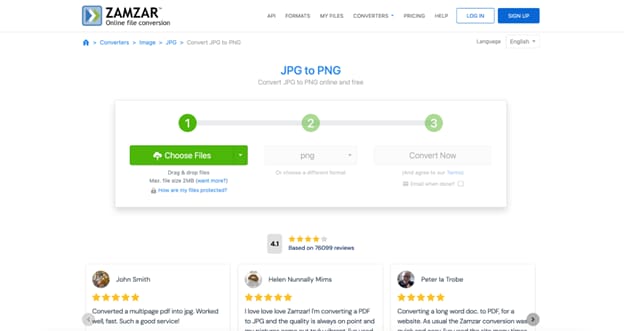
Key Features:
- Supports over 1200 file formats, including images, documents, and videos.
- Quick and simple three-step conversion process.
- Works entirely online, so no software download is required.
- Provides email notifications when conversion is completed.
- Allows batch conversion of multiple files at once.
2. FreeConvert
FreeConvert is a web-based image conversion tool that allows users to convert JPEG to PNG and vice versa without compromising quality. It offers advanced settings, such as image compression adjustments and color depth selection, giving users more control over the final image output.
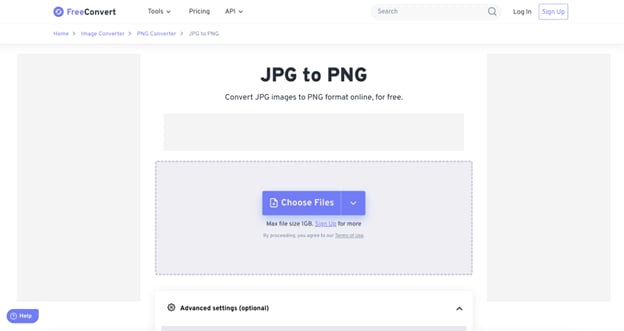
Key Features:
- No sign-up required for instant conversions.
- Customizable settings, including image compression and resolution options.
- Supports multiple file conversions simultaneously.
- Works on all browsers and mobile devices.
- Secure processing with file encryption for privacy protection.
3. Online-Convert
Online-Convert is a multi-purpose file converter that offers a dedicated tool for JPEG to PNG conversion. It allows users to adjust file size, color profiles, and image quality before downloading the final output, making it ideal for those who need precise control over their images.
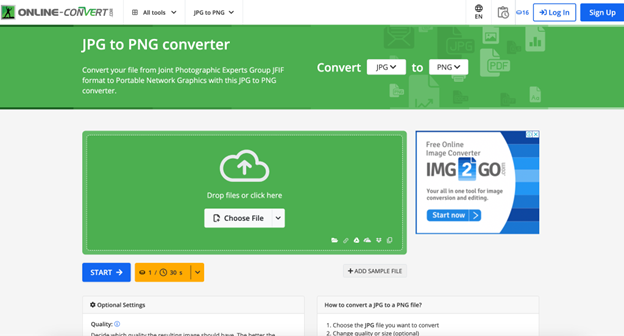
Key Features:
- Allows image resizing and cropping before conversion.
- Supports direct file uploads from cloud storage (Google Drive & Dropbox).
- Provides metadata editing options for advanced users.
- Fast and free conversion for small to medium file sizes.
- Supports multiple image formats, including BMP, TIFF, and GIF.
Top 3 Offline Software for Converting JPG to PNG:
1. XnConvert
XnConvert is a powerful offline batch image converter that allows users to convert JPEG, PNG, and over 500 image formats. It provides advanced editing features, including watermarking, cropping, and color adjustments, making it ideal for both casual users and professionals.
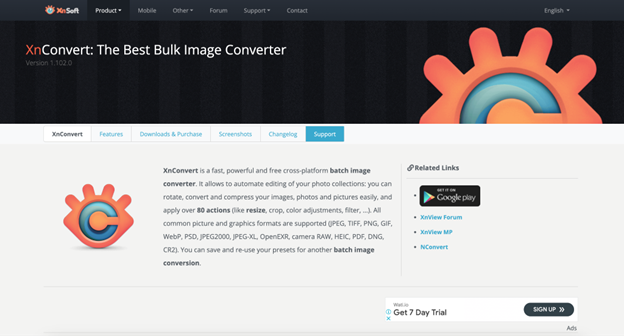
Key Features:
- Supports batch conversion of multiple images at once.
- Includes editing tools like resizing, color correction, and filters.
- Compatible with Windows, macOS, and Linux.
- No internet connection required for secure file processing.
- Allows automated scripting for efficient workflow management.
2. FastStone Image Viewer
FastStone Image Viewer is a lightweight and easy-to-use image converter and editor that supports JPEG, PNG, BMP, and GIF formats. It provides a user-friendly interface with built-in editing tools, making it a great choice for anyone looking for a simple yet efficient solution for image format conversion.
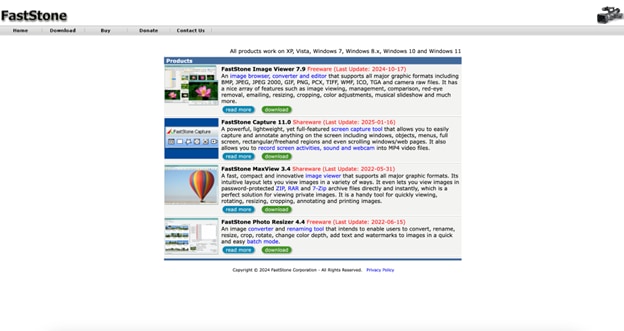
Key Features:
- Built-in image editor for basic adjustments and cropping.
- Supports drag-and-drop conversion for easy file management.
- Offers batch image conversion for processing multiple files at once.
- Includes slideshow and preview options for easy file browsing.
- Lightweight software that runs efficiently on all PCs.
3. Paint.NET
Paint.NET is a free image editing software that supports JPEG, PNG, and other popular formats. It includes layer-based editing and advanced image manipulation tools, making it a great alternative to Photoshop for basic image conversions and enhancements.
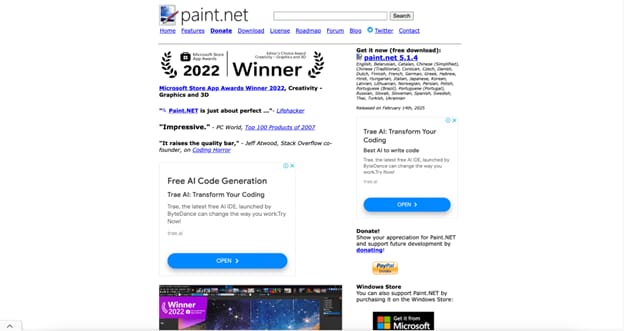
Key Features:
- Free and open-source with an intuitive user interface.
- Supports high-quality image editing and conversion.
- Allows layered editing, useful for graphic design and transparency adjustments.
- Compatible with plugins for additional functionality.
- Lightweight software that runs smoothly on Windows PCs.
Part 6: Wondershare DemoCreator – Edit & Capture Images in Both Formats
When working with JPEG and PNG images, having a reliable tool for capturing, editing, and exporting images in both formats is essential. Wondershare DemoCreator offers a simple yet powerful solution for taking high-quality screenshots, making quick edits, and exporting images in the desired format. Whether you’re creating tutorials, presentations, or web content, DemoCreator allows you to adjust image details, add annotations, and choose between PNG or JPEG formats with ease. With its built-in editing tools, you can enhance images before saving them, ensuring professional-quality visuals for any project.
Why use Wondershare DemoCreator for working with JPEG & PNG?
- Supports Both JPEG & PNG Formats – Easily capture, edit, and export images in either JPEG for web optimization or PNG for high-quality transparency.
- High-Quality Screen Capture – Take clear and sharp screenshots for presentations, tutorials, or video projects without losing details.
- Built-in Editing Tools – Crop, annotate, and adjust brightness, contrast, and sharpness to enhance your images before saving them.
- Real-Time Markup & Annotations – Add text, arrows, highlights, and other annotations to make your screenshots more informative and engaging.
- One-Click Export & Sharing – Save images instantly in the desired format and use them in videos, slideshows, or online content.
- Perfect for Content Creators & Educators – Ideal for tutorials, explainer videos, and presentations, allowing seamless integration of images into multimedia projects.
How to use Wondershare DemoCreator to edit and save images:
Step 1Capture or Import an Image into Wondershare DemoCreator
Launch Wondershare DemoCreator and either capture a screenshot using the built-in screen capture tool or import an existing image from your device. This feature allows you to work with JPEG or PNG images for editing and formatting.
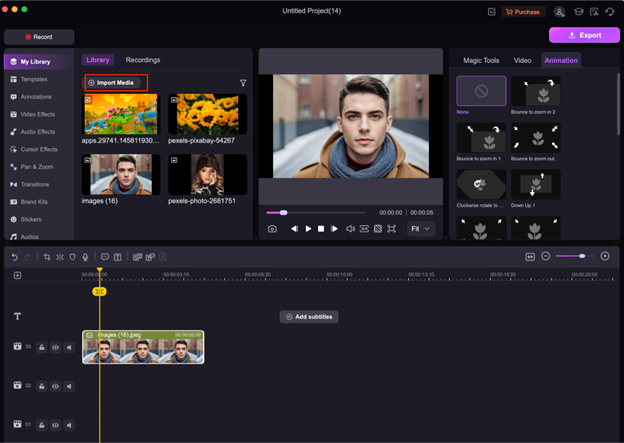
Step 2Edit and Enhance the Image with Drawing Tools
Use the annotation and drawing tools to add text, arrows, highlights, or shapes to emphasize important details. You can also crop, adjust brightness, and modify colors to improve image clarity. These editing options help in creating professional-quality visuals for presentations and videos.
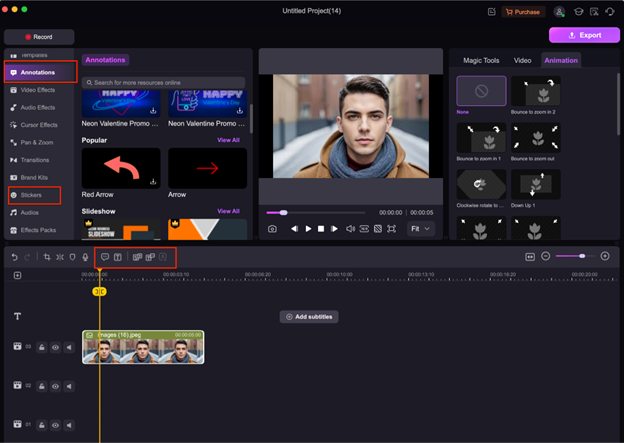
Step 3Choose Between PNG and JPEG Formats for Export
Once the editing is complete, select the desired export format. This flexibility ensures that your images are saved in the best format for your needs.

Conclusion
Choosing between JPEG and PNG depends on your specific needs—JPEG is best for photos and web images, while PNG is ideal for graphics, logos, and images requiring transparency. Always consider file size, image quality, and the need for editing or transparency when selecting a format. JPEG offers smaller file sizes for faster web performance, whereas PNG preserves details and supports clear backgrounds. If you need to capture, edit, and save images effortlessly, Wondershare DemoCreator is a powerful tool that supports both formats, allowing you to create high-quality visuals for presentations, videos, and online content.
FAQs
-
1. Which format is better for web images – JPEG or PNG?
JPEG is better for web images because it has a smaller file size, making it faster to load on websites. However, if the image requires sharp details, transparency, or frequent editing, PNG is the better choice, despite its larger file size. -
2. Can I convert PNG to JPEG without losing quality?
Yes, you can convert PNG to JPEG, but since JPEG uses lossy compression, some quality may be lost. To maintain the best quality, use an image editor like Wondershare DemoCreator to adjust compression settings before exporting the file. -
3. Why is my PNG file larger than my JPEG file?
PNG uses lossless compression, meaning it retains all image details without quality loss, resulting in larger file sizes. JPEG, on the other hand, compresses the image by removing some data, making it smaller but slightly lower in quality. -
4. Is PNG or JPEG better for social media posts?
JPEG is generally better for social media because platforms automatically compress images, and JPEG files load faster. PNG is ideal for graphics, logos, or images with text, as it preserves sharpness and transparency.


